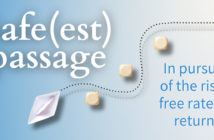Deciphering the ways capital markets evaluate construction projects to deem them financing worthy
Financing plays a major role in maximizing any commercial real estate or hotel development opportunity. Unlike stocks, real estate is an asset class that’s dependent on leverage. Since the lion’s share of any capital stack is funded by debt, optimizing that debt is one of the most important steps in any successful project. It also can be one of the most challenging, especially when developers move outside of SBA 504 or SBA 7(a) loans. For larger, more institutional projects of $20 million and higher, and projects by companies surpassing SBA limits, there typically are two paths to securing financing. The first is through a bank or related financial institution. The second is through a debt fund or private equity fund. No matter which lane a sponsor chooses, the key to a successful construction loan closing is to be realistic about metrics, projections, equity expectations, and what the market can bear in terms of rates and terms for loan proceeds.
BANK ON IT
Financial institutions willing to finance construction projects typically are a community or regional bank with a deep relationship with the sponsor. Just like a grocery store offers a sale on milk to get shoppers into the store to buy additional items, most banks approach construction lending as a loss leader. They use the financing to establish new and deeper banking relationships with the sponsor, knowing they’ll make money on those more-profitable ancillary products and services. Banks build this knowledge into an internal, relationship-pricing model upon which bankers rely to price each loan. Treasury-management services, amount of deposits held at the bank (at almost no interest), and projected fees collected for wires, loans, private banking services, trusts, investment management, loan origination, and other bank services are all ways the bank can make up the lost profit on the construction loan and are used as inputs to calculate the customer’s overall profitability.
For banks, undrawn commitments cost slightly lower in the form of capital charges from regulators compared to a loan that is fully drawn. This makes banks somewhat ideal to write construction loans. However, along with this preferable capital treatment, comes conservative credit guidelines. As a result, banks tend to be less aggressive on loan-to-cost. They also are hyper focused on their exit strategy and underwrite for how a project will perform once stabilized – usually two years after construction is completed. Many will extend that to year three or four (along with a bit of cushion) to determine whether a permanent loan can be achieved to pay off the construction loan. Banks rely on other professionals like an investment banker or an intermediary to validate that their loan can be paid with a CMBS or other permanent loan exits. If the sponsor’s projections are too lofty and the bank can’t comfortably underwrite its exit, the bank will need to require recourse or personal guarantees to get credit committee approval for the loan. More often than not, however, recourse alone is not sufficient. Banks may also ask the sponsor to put more skin in the game in the form of additional equity.
GO PRIVATE
Non-bank private lenders are a bit more sophisticated than banks in their underwriting. These lenders typically focus on triangulating the underwriting metrics among loan-to-cost/loan-to-value, DSCR, and debt yield (net operating income divided by loan amount), to determine the loan amount. They also pay too much attention to exit underwriting and validating sponsors projections to make sure that they aren’t over extended.
Although most of these loans are non-recourse, they usually carry completion guarantees. The loan is essentially full recourse during the construction period to ensure the project is completed as advertised. If the project isn’t finished as promised, the sponsor is on the hook for the entire loan amount. Loans from non-bank private lenders also have a component of interest reserve built into their sources and uses. This ensures enough interest is capitalized for a smooth debt service during construction and ramp up. During construction, these loans are almost always interest-only. Since the lender isn’t really making any money during the loan term (most of the interest income from the loan is a cost of the actual capital), private lenders charge origination fees. Because these lenders are strictly focused on project financials, for a more lucrative project this type of loan can yield higher loan-to-cost and leverage and lower equity requirements. Therefore, for chunkier projects of $40 million or higher, private loans often are the only way to make a project work.
NAVIGATING THE OPTIONS
There’s an entire industry of construction financing providers that supplement sponsors’ local or regional relationships. Some of these construction lenders only operate via the mortgage banking channels to make their business more efficient and leverage the intermediary’s knowledge of structuring the deals and ensuring a successful payoff after the construction is complete. In almost every case for larger construction loan projects, it would be advantageous for a developer to scan the capital markets through their preferred intermediary relationships.





